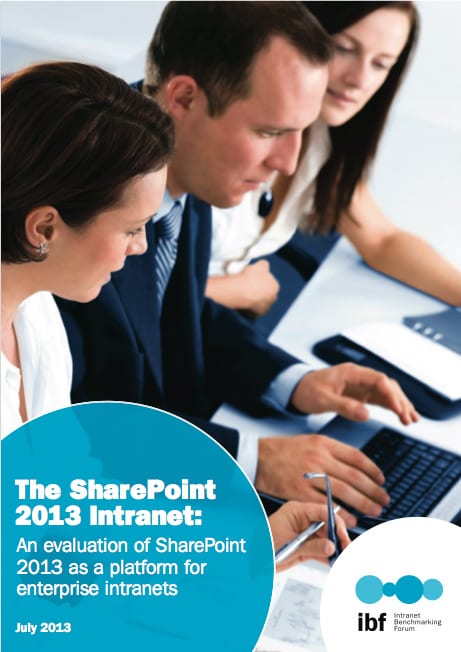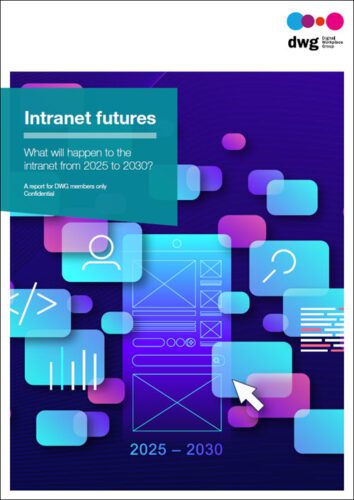3 under-reported intranet success factors for SharePoint 2013
DWG’s new research report on SharePoint 2013 outlines the main considerations for evaluating and implementing the latest of Microsoft’s intranet/portal offerings.
DWG is strictly vendor neutral and has produced this report only in response to our members’ interest in the topic. Even so, report author Sam Marshall has given a very balanced view of SharePoint 2013, including an analysis of its weaknesses.
The report also includes a section on critical success factors, aimed at those companies that are planning to go forward with SharePoint 2013.
The report explains 12 different success factors, each of which combines broader intranet best practices with the specifics of SharePoint 2013. Here we’ve provided a sample of three of those SharePoint success factors that you might not hear much about elsewhere.
Sample success factors from DWG’s SharePoint 2013 report
#7. Have a collaboration strategy
SharePoint’s design is based on a certain model of how people collaborate. In particular, team sites seem to work best in environments that like structured project methodologies. The social layer that has evolved in SharePoint 2103 offers an alternative approach, but the best chance of adoption lies in working out how people are already working, and then demonstrating how SharePoint can fit with this, through training, coaching and support.
#8. Have a channel strategy
As a communication platform, SharePoint should not be viewed as a single channel but as a whole range, from local and corporate intranet sites to blogs, video and social media. Internal Communications should have a clear plan about which channels to use for which kinds of communication, both within SharePoint and outside it.
#11. Integrate the business and IT development teams
SharePoint applications built in one country and then rolled out in many others stand a high chance of not working well, if at all. Localization remains complex and the business and development teams need to be broadly representative of the main business units. Consider a ‘Centre of Excellence’ model where platform managers, developers, analysts, intranet managers and trainers all operate as a single team.
The full table of contents from DWG’s new SharePoint 2013 report:
- An overview of SharePoint 2013
- Collaboration and social networking
- Publishing and internal communications
- Search, metadata and analytics
- Mobile SharePoint and apps
- SharePoint’s digital workplace fit
- Governance, adoption and organizational readiness
- Planning a move to SharePoint 2013
- Case studies
- Critical success factors.
[one_half] [/one_half] [one_half_last]
[/one_half] [one_half_last]
Get your free executive summary of DWG’s latest research on SharePoint.
Vendor neutral, in-depth, hype-free.
[cta]Download now[/cta][/one_half_last]
DWG membership: Beyond research
SharePoint 2013, just like its predecessors, has created quite a stir in the intranet community and is forcing many intranet teams to think critically about their intranet projects.
This report is part of DWG’s broader set of services, which can help large companies that are looking at SharePoint 2013.
DWG members services that can help with SharePoint implementations:
- Other intranet research (example, Measuring Intranets report)
- Online Knowledge Exchanges (confidential, members-only webinars)
- Member meetings with in-depth intranet tours and SharePoint sessions
- A private online social network for DWG members.
If you’re interested in reading the full report and other resources for building an outstanding intranet, learn more about DWG membership. DWG members get access to this full report, along with dozens of other high quality research papers and many other services.
Categorised in: → SharePoint, Digital workplace strategy, Research reports
